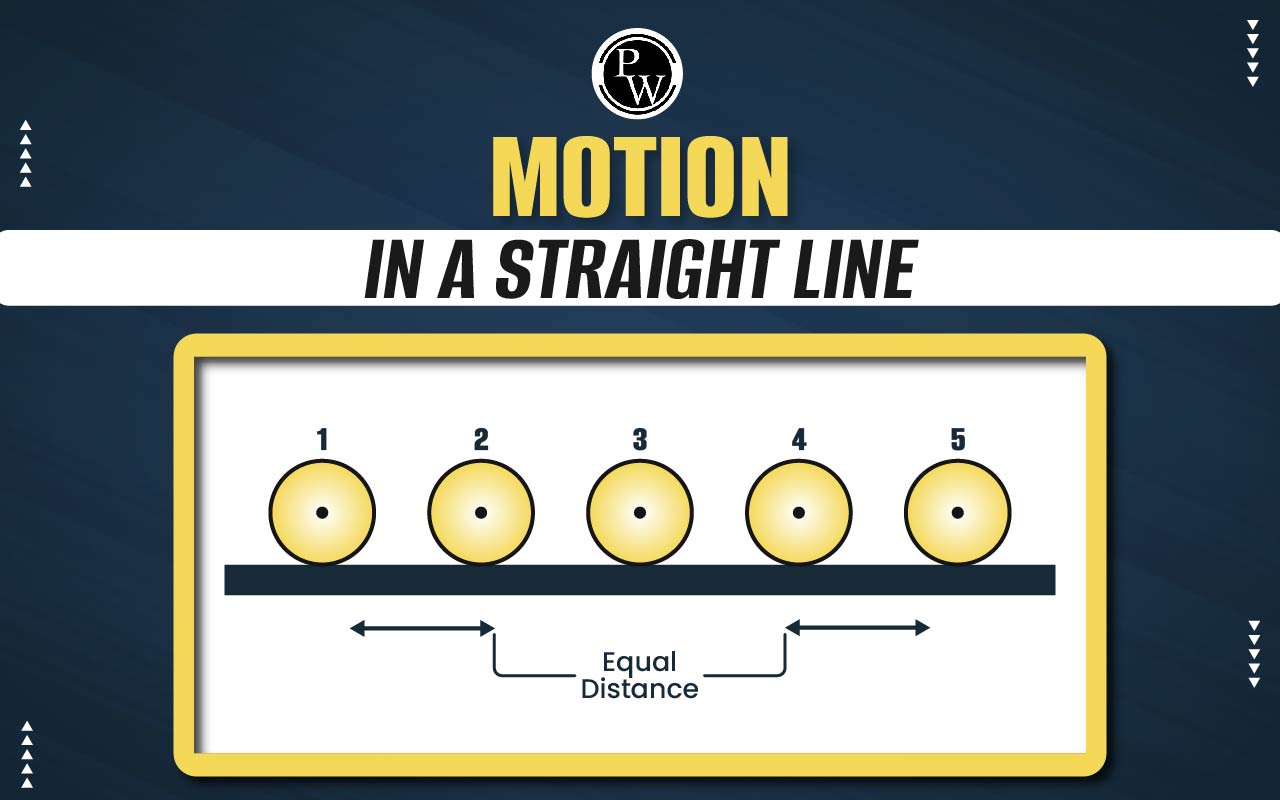

Motion In A straight Line : When hearing the names of physical quantities distance and displacement, we may think that they both are the same. But they are different actually. Distance is the measure of the total path length covered and displacement is the measure of how much an object got displaced.
Rest, motion And Position In JEE Physics Syllabus
We can see a lot of objects around us. We can say that either those objects are at rest or in motion. If an object does not change its position with respect to time, we can say that the object is at rest. If the object changes its position with respect to time, the object is said to be in motion. Stating whether an object is at rest or in motion is meaningless without an observer.
That means, there is no such thing as absolute rest or in absolute motion. The position of an object can be described using the frame of reference. Convenient and the most accepted way of choosing a frame of reference is three mutually perpendicular axes named X-Y-Z. The position of the object with respect to this frame of reference is specified by the x , y and z coordinates.
Distance In JEE Physics Syllabus
When you are coming back from school, you will have to travel on the road. In the figure, you can see that the student has to travel on six straight roads. By measuring the lengths of each road and adding them up, we will get the total distance travelled.
Thus, distance is the total path length covered from the initial position to the final position. Distance is a scalar quantity. The SI unit of distance is metre ( m ).
Displacement In JEE Physics Syllabus
Even though you have to travel on different roads to reach home from school, we can draw a straight line connecting the school and home. If we construct a road through this straight line, we know that it will be the shortest distance from school and home, unfortunately, we can’t do it everywhere. This shortest distance will give us the measure of displacement. So, change in position of an object is called displacement.
Displacement = ∆ x = x f – x 0
x f = Final Position
x 0 = Initial; Position
∆ x = Displacement
In the above figure, we can find the displacement using Pythagoras theorem.
Displacement =
When we mention the displacement of an object, we need to mention the direction in which it was displaced. For example, in this figure, if we consider the school as the origin, the home will be towards the North-East direction.
Thus, displacement requires both magnitude and direction to define it. Therefore, displacement is a vector quantity while distance is a scalar quantity. When a person completes one lap on a circular track of radius r, the distance covered will be equal to the perimeter of the circle. i.e., 2π r . But there’s no change in position for the person. Thus, the displacement of the person is zero. The SI unit of displacement is metre ( m ).
Difference Between Distance And Displacement :
|
Distance |
Displacement |
| It is the total path length covered | It is the shortest length between final and initial positions. |
| It is a scalar quantity | It is a vector quantity |
| It can never have negative values | It can have positive, negative, or even zero values |
| It can never have a value lesser than displacement. | It can have a value either equal to or less than distance. |
Distance And Displacement Examples
1. A person moves on a semicircular track of radius 40 m . If he starts at one end of the track and reaches the other end, find the magnitude of displacement of the person.
Answer: Displacement = Diameter = 2 × Radius = 2 × 40 m = 80 m .
2) A car moves from O to D along the path OABCD shown in figure. What is distance travelled and net displacement.
Motion In A straight Line FAQs
Q.1 : What is meant by distance?
Q.2. What is meant by displacement?
Q.3 Can displacement be negative?
Q.4 : Can we have zero displacement with non-zero distance covered?
Q.5 : Among distance and displacement, which one is scalar and vector quantity?












